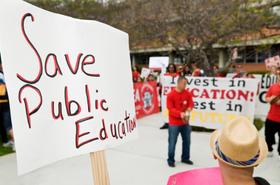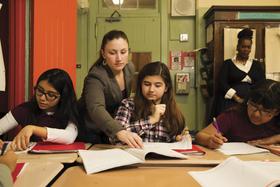Public School Safety Protocols: What’s New in 2025?
Public School Safety Protocols have evolved rapidly in recent years, driven by community expectations, federal guidance, and the lessons learned from real incidents. In 2025, public districts nationwide are adopting more>This article outlines the most significant updates in 2025, examines how schools are implementing these Public School Safety Protocols, and offers guidance for families seeking to evaluate a district’s commitment to safety.
The 2025 Landscape: Why Public School Safety Protocols Are Changing
School administrators have emphasized that Public School Safety Protocols must support prevention, rapid communication, and post-incident recovery. Several developments have shaped this year’s changes.
Key drivers of 2025 Public School Safety Protocols include:
Rising expectations for parent communication
Increased federal and state funding for campus security systems
Greater use of behavioral-health-driven prevention
Stronger state-level auditing of Public School Safety Protocols
Expanded staff training mandates
New partnerships with local emergency agencies
Parents exploring district data often turn to resources such as Public School Revie to understand how Public School Safety Protocols vary across campuses.
Major Updates to Public School Safety Protocols in 2025 1. Technology Integration and Real-Time Monitoring
Districts are expanding technology deployments to create more responsive Public School Safety Protocols. In 2025, several tools are becoming standard rather than optional.
Widespread adoption includes:
AI-assisted camera networks that detect unusual behavior and alert safety teams
Digital visitor management systems at every public school entrance
Two-way classroom communication systems enabling teachers to report emergencies instantly
Anonymous reporting apps for bullying, threats, and self-harm concerns
Public School Safety Protocols now emphasize interoperability, meaning systems are designed to communicate with one another and with first responders.
Comparison: Common Technology in Public School Safety Protocols (2024 vs. 2025)
| Feature | 2024 Availability | 2025 Availability |
|---|---|---|
| AI-assisted cameras | Limited pilots | Widespread in mid-sized and large districts |
| Digital visitor check-in | Common | Nearly universal |
| Panic alert systems | Growing adoption | Required in several additional states |
| Anonymous reporting apps | Optional | Standard in revised Public School Safety Protocols |
2. New Emergency Response Requirements
Public School Safety Protocols in 2025 now include more rigorous drills, clearer communication plans, and standardized staff roles.
Key emergency response enhancements:
Multi-scenario drills that go beyond fire and lockdowns
Mandated reunification protocols for families
Cross-agency simulations conducted annually
Standardized terminology to reduce confusion during incidents
Some states have introduced updated compliance checklists. Families researching specific districts often compare protocols through resources such as Community College Revie when examining neighboring secondary programs, especially in dual-enrollment partnerships.
3. Mental Health as a Core Safety Component
Increasingly, districts recognize that Public School Safety Protocols must include mental health supports. Prevention and early reporting have become top priorities in 2025.
Common additions to Public School Safety Protocols:
Universal mental-health screeners
Expansion of on-site mental health teams
Staff training in trauma-responsive practices
Threat-assessment teams using standardized models
Many districts now consider these supports equal in importance to physical security. Public School Safety Protocols in 2025 are designed to reduce incidents by addressing root causes and building trust.
4. Strengthening School Climate and Anti-Bullying Prevention
Public School Safety Protocols this year emphasize that safe schools depend on climate, culture, and relationship-building. Many districts now incorporate:
Clear anti-bullying intervention timelines
Restorative practice frameworks
Daily adult visibility throughout hallways and common areas
Expanded peer-mentorship initiatives
Annual climate surveys for students and staff
Anti-bullying measures are also a core topic for families comparing schools on platforms like Private School Revie, which often highlight how Public School Safety Protocols differ from those in independent schools.
5. Visitor and Access-Control Standards
Several states issued revised building security guidelines in 2025. These have influenced Public School Safety Protocols across the country.
2025 access-control priorities include:
Controlled single-point entry for all schools
Mandatory ID scanning for all visitors
Regular testing of perimeter security
More consistent signage and check-in expectations
Electronic access logs for safety audits
Districts must now document compliance each year, and many publish their Public School Safety Protocols online for transparency.
How Districts Are Training Staff in 2025
Training remains central to Public School Safety Protocols. Districts are shifting from one-time annual sessions to year-round professional development.
Modern staff training covers:
De-escalation practices
Emergency medical response
Technology system use
Student mental-health identification
Cultural competency to reduce bias in disciplinary responses
Public School Safety Protocols now require new staff to be trained before their first day with students, not weeks later as in prior years.
The Role of Parents in Public School Safety Protocols
Families are increasingly encouraged to participate. In 2025, districts provide more proactive communication so parents can understand and support Public School Safety Protocols.
Most common parent-facing updates include:
Digital safety handbooks
Scheduled safety-protocol review nights
Clear contact information for reporting concerns
Tutorials on district safety apps
Real-time incident notification systems
Parents often use tools such as Boarding School Revie to compare safety practices when evaluating residential alternatives for older students. Although focused on private settings, these comparisons help families frame questions about Public School Safety Protocols in their own districts.
Equity and Transparency in Public School Safety Protocols
Districts are now prioritizing equitable implementation. In 2025, many are addressing how Public School Safety Protocols affect students differently based on background, disability status, or language needs.
New equity-focused components:
Ensuring drills accommodate students with disabilities
Providing multilingual materials for families
Reviewing discipline data for disparities
Adding student advisory committees
Transparency is essential. Districts increasingly publish annual reports detailing how Public School Safety Protocols performed, which enhancements were adopted, and where challenges remain.
Looking Ahead: The Future of Public School Safety Protocols
In 2025, Public School Safety Protocols reflect a shift toward prevention, rapid communication, and coordinated emergency management. Districts are preparing for:
Greater use of predictive analytics
Universal statewide safety-audit systems
More comprehensive staff credentialing in safety fields
Integration of mental-health, climate, and security planning
Continued collaboration with community partners
Families, educators, and policymakers share responsibility for maintaining these Public School Safety Protocols. The most effective systems integrate clear expectations, consistent training, and transparent communication.
Conclusion
Public School Safety Protocols in 2025 are more comprehensive,>These standards will continue to evolve as communities demand safer, more supportive learning environments. Public School Safety Protocols in 2025 represent an important step toward that goal.















